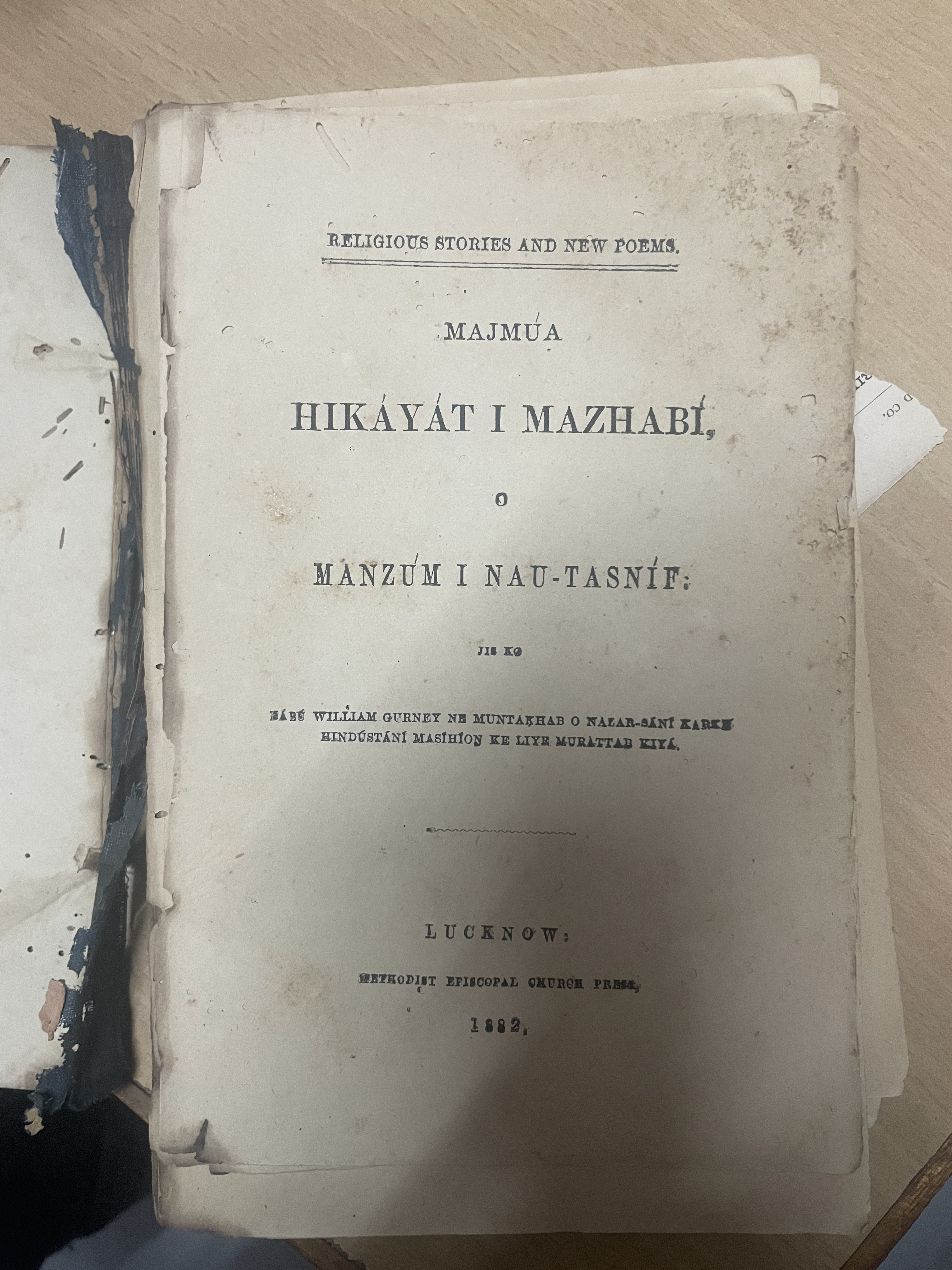Majmua Hikayat I mazhabi, o manzum i nau tasnif

About
Summary
Exquisite
TOC
Details
Related
URL
Images
Overview
Majmua Hikayat I Mazhabi, o Manzum i Nau Tasnif, published by the Episcopal Church Press in 1882, is a significant work that compiles religious stories and poetry. Although specific details about the book are limited, we can infer its importance based on its title and the context of religious literature during that period. Below is a detailed summary, along with an exploration of the book's significance, themes, cultural impact, and effects on society.The title translates to Collection of Religious Stories and Newly Composed Poetry, indicating that the book serves as an anthology of narratives and poetic works centered around religious themes. The compilation likely includes stories from various religious traditions, emphasizing moral lessons, spiritual insights, and cultural values.
Structure and Content
The book is divided into two main sections:
Hikayat (Stories): This section consists of various religious tales that may draw from Islamic traditions as well as other faiths. These stories often feature moral dilemmas, parables, and lessons designed to impart ethical values and spiritual wisdom. The narratives serve to illustrate the principles of faith and the importance of righteous living.
Manzum (Poetry): The poetry section likely includes newly composed verses reflecting on religious themes, devotion, and spirituality. These poems may take various forms—such as ghazals or nazms—and express deep emotions related to faith, love for God, and the human experience in relation to the divine.
Importance of Book
Educational Tool: The book serves as an educational resource for readers interested in understanding religious narratives and their moral implications. It provides insights into ethical behavior and spiritual growth through storytelling.
Cultural Preservation: By compiling stories and poetry from different traditions, the book helps preserve cultural heritage and religious teachings. It reflects the diversity of beliefs and practices within a broader context.
Promotion of Religious Values: The work emphasizes key religious values such as compassion, humility, honesty, and justice. It encourages readers to reflect on their actions and strive for a virtuous life.
Literary Contribution: As a collection of newly composed poetry alongside traditional stories, it contributes to the literary landscape of Urdu literature during the 19th century. It showcases the evolution of poetic forms and styles influenced by both classical and contemporary themes.
Key Themes
Faith and Devotion: Central to many stories and poems is the theme of faith—how individuals navigate their beliefs in daily life and their relationship with God.
Moral Lessons: The narratives often convey moral lessons that encourage ethical behavior and highlight the consequences of one's actions.
Spiritual Enlightenment: Many pieces aim to inspire readers toward spiritual enlightenment, encouraging introspection and a deeper understanding of their faith.
Cultural Identity: The collection reflects cultural identity by incorporating diverse narratives that resonate with various communities within a shared religious framework.
Human Experience: The stories explore universal human experiences—love, loss, joy, suffering—while framing them within a religious context that offers hope and guidance.
Cultural Significance
Interfaith Dialogue: By including narratives from multiple religious traditions, the book promotes interfaith dialogue and understanding among different communities.
Literary Heritage: It contributes to the rich literary heritage of Urdu literature by preserving traditional storytelling methods while also innovating through newly composed poetry.
Social Cohesion: The emphasis on shared values fosters social cohesion among readers from diverse backgrounds, promoting unity through common ethical principles.
Encouragement of Literary Expression: The anthology encourages literary expression within religious contexts, inspiring future writers to explore similar themes in their works.
Influence on Education: As an educational tool for both children and adults, it may have influenced curricula in schools or religious institutions focused on moral education through literature.
Effects on Society
Increased Literacy: As literacy rates rose during this period in South Asia, such compilations contributed to a growing readership interested in religious texts.
Moral Framework: The book provided a moral framework for individuals navigating societal challenges during colonial times when traditional values were often questioned or undermined.
Cultural Exchange: By drawing from various traditions, it facilitated cultural exchange among communities, enriching the social fabric of society.
Revival of Interest in Religious Literature: Its publication may have sparked renewed interest in religious literature during a time when Western influences were becoming more prominent in South Asia.
Empowerment Through Knowledge: By making religious teachings accessible through stories and poetry, it empowered individuals with knowledge that could guide their lives positively.
Conclusion
Majmua Hikayat I Mazhabi, o Manzum i Nau Tasnif is more than just a collection of stories and poems; it serves as an important cultural artifact reflecting the values, beliefs, and literary traditions of its time. Through its exploration of faith, morality, and human experience, it contributes significantly to Urdu literature while promoting interfaith understanding and social cohesion. Its impact on education, cultural preservation, and literary expression continues to resonate within society today, making it a valuable resource for future generations seeking insight into their spiritual heritage.
Title
Majmua Hikayat I mazhabi, o manzum i nau tasnif
Author
E
Name of Publisher
Episcopal Church Press
Publish Date
1882
Vintage
1801-1900
Number of Pages
319
Category
Literary
Sub Category
Social Sciences
Rarity
RARE
